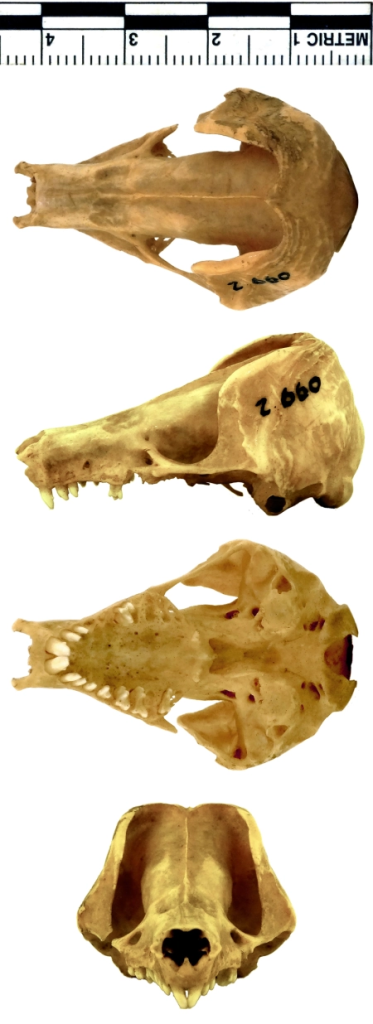Last week I gave you this incredibly funky skull to have a go at identifying:
It’s from a very distinctive type of animal, which pretty much everyone figured out, thanks to those huge bony crests on the front of the cranium (actually originating from the maxilla). In life, these would have almost enclosed the animal’s melon (a waxy ball that helps focus sound transmitted through water), helping to improve echolocation.
This is of course the skull of a River Dolphin – which is a term given to a variety of riverine dolphins around the world – although only the Genus from South Asia (Platanista, as Chris Jarvis was the first to identify) has the characteristic bony crests. This is probably an adaptation to their reliance on echolocating in the sediment-laden and murky waters of the Indus and Ganges rivers.
As Adam Yates correctly pointed out in the comments, the tooth count suggests that of the two possible species, this is the Susu, Hihu, Shushuk, or Ganges River Dolphin Platanista gangetica (Lebeck, 1801).
These dolphins have almost lost the use of their eyes, with them being lenseless and merely used for detecting the difference between light and dark. This pushes them to rely on echolocation as their primary method of finding food.
I find it interesting that Giant Golden Moles have a somewhat similar crest structure to their skulls, while sharing this near blind condition (I’ve talked about this a little in a previous post):
As far as I’m aware the Giant Golden Mole has no melon, but it does have (relatively) huge ear bones, no external ear openings, and lives at ground-level rather than underwater, so it may be that the bony structure helps focus sound transmitted through the ground into the auditory region of the skull, in a way similar to that suggested for the South Asian River Dolphin’s crest, albeit in the water.
Speculation about comparative structures aside, the South Asian River Dolphins are incredibly well adapted to their habitat, which means that their populations are increasingly at risk due to changes arising from the climate crisis (such as changing annual rainfall and runoff patterns), farming practices (such as increased pesticide and fertiliser contamination of waterways), hydrological management (such as the installation of dams), plus hunting and accidental fatalities due to river traffic.
Similar pressures have almost certainly already pushed the Baiji or Yangtze River Dolphin into extinction, so let’s hope we can learn from the mistakes of the past, and ensure these strangely wonderful animals survive into the future.


